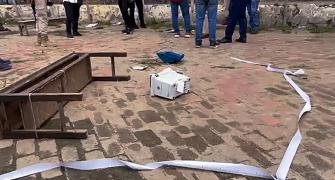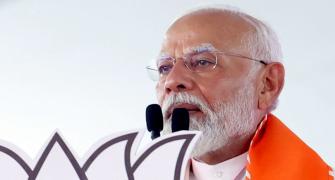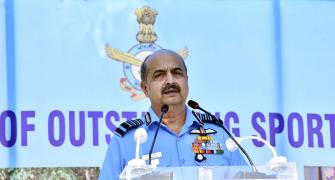A friend of mine who had to make a presentation recently was completely stressed out just thinking about it.
Where do I begin? What format do I use? How do I present my project so that it seems as impressive as possible? He was so tormented by these questions that he developed a severe mindblock and kept postponing his preparation.
"I don't know where to begin," he said, not for wont of ideas, but because he had too many swirling about in his head!
Somewhere down the line, he also realised he did not possess enough information to choose a format or decide on the points that should be covered.
Should he have been so anxious? No! Instead, he should have been excited since his presentation posed both a creative and intellectual challenge.
When presented with challenging tasks such as these, we often do not know how to organise our thoughts -- be it an all-important presentation that could be the turning point in our career or a toast at a friend's wedding.
Map your Mind
Dolly Biswas, who heads the commerical art department at Mumbai's B D Somani Institute of Art and Fashion, beats such mental blocks by resorting to a strategy called mind mapping.
"Start with the 'core' word. Then apply your mind to think rationally as well as laterally and list different words relating to the 'core' word. See where it leads you," she says.
If that sounds like new age management spiel, Biswas gives an example to make the concept clearer.
If you ask a child to pen an essay on 'The Circus', s/he may have trouble finding enough material to write 10 sentences on the subject. Try this approach instead. Ask her/ him to write down words connected with the word 'circus'. His/ her imagination will run riot, as the list gets longer with words like clowns, big tent, acrobats, lions, elephants, etc.
Now, using this list of words as a reference, s/ he can easily coin an essay of 10 sentences.
This is a basic example of how mind mapping can be used to think more clearly.
Mind mapping, as a technique, was put together by Tony Buzan, author of Use Your Head. In fact, a significant part of the book, which helps put presentations on the right track, is devoted to this technique.
Benefits of mind mapping
~ A mind map can halve the time it takes to develop a presentation, a report, an article or a letter.
~ It allows you to use words to visually relate concepts and information in ways that are more enlightening than note-taking or outlining.
~ Mind mapping a presentation helps you take a look at how you can best present your information, because it enables you to focus not only on the content, but also on the sequence of the content.
~ A mind map helps you see not only what is there, but also realise what is missing.
How to create a mind map
Suresh Bharwani, corporate trainer and CEO of Jetking, an IT training company, offers these tips on the mind mapping process.
i. Start with the central idea/ word
Write this premise in the middle of a blank sheet of paper. Then, list the first support idea that comes to mind in the 12 o'clock position.
Next, note any related points. As you exhaust ideas on a topic, move to the 1 o'clock position and begin again. Continue clockwise.
ii. Let the thoughts flow
Do not restrict your thoughts or try to keep your thought process logical.
iii. Use only key words
Often, when taking notes or creating an outline, we use too many words.
Most people think faster than they write (the human mind can think of up 1,200 to 1,600 words a minute. On an average, most people can write 25 to 35 words a minute in freehand; the best of us can type little more than 100 words a minute).
The idea is to think in bullet form and jot down one or two words that capture the concept. This way, you won't slow down your thinking.
iv. Allow yourself to bounce around
You could suddenly find yourself thinking of something that fits with idea number one even as you are working on your third or fourth key idea.
That's okay. Stop, bounce back, add the idea and then continue.
v. Feel free to connect things that relate
When two topics relate to one another, simply draw an arrow to connect them.
The arrow may be drawn with the same colour as the rest of the mind map or with another colour to highlight the intended connection clearly.
vi. Try short bursts
Time yourself for five minutes. Then take a break, sit back and look at your mind map.
Do something else. Then, spend another five minutes adding, modifying, and adjusting your mind map.
vii. Mind mapping is a tool
Many people, when exposed to mind mapping, say, "I could never show this to my boss." A mind map is not necessarily for others. It is primarily for yourself.
Don't use a mind map as a report. Instead, use the mind map to help create the report. Use it to make sure all the elements you want in the report are there before you start.







